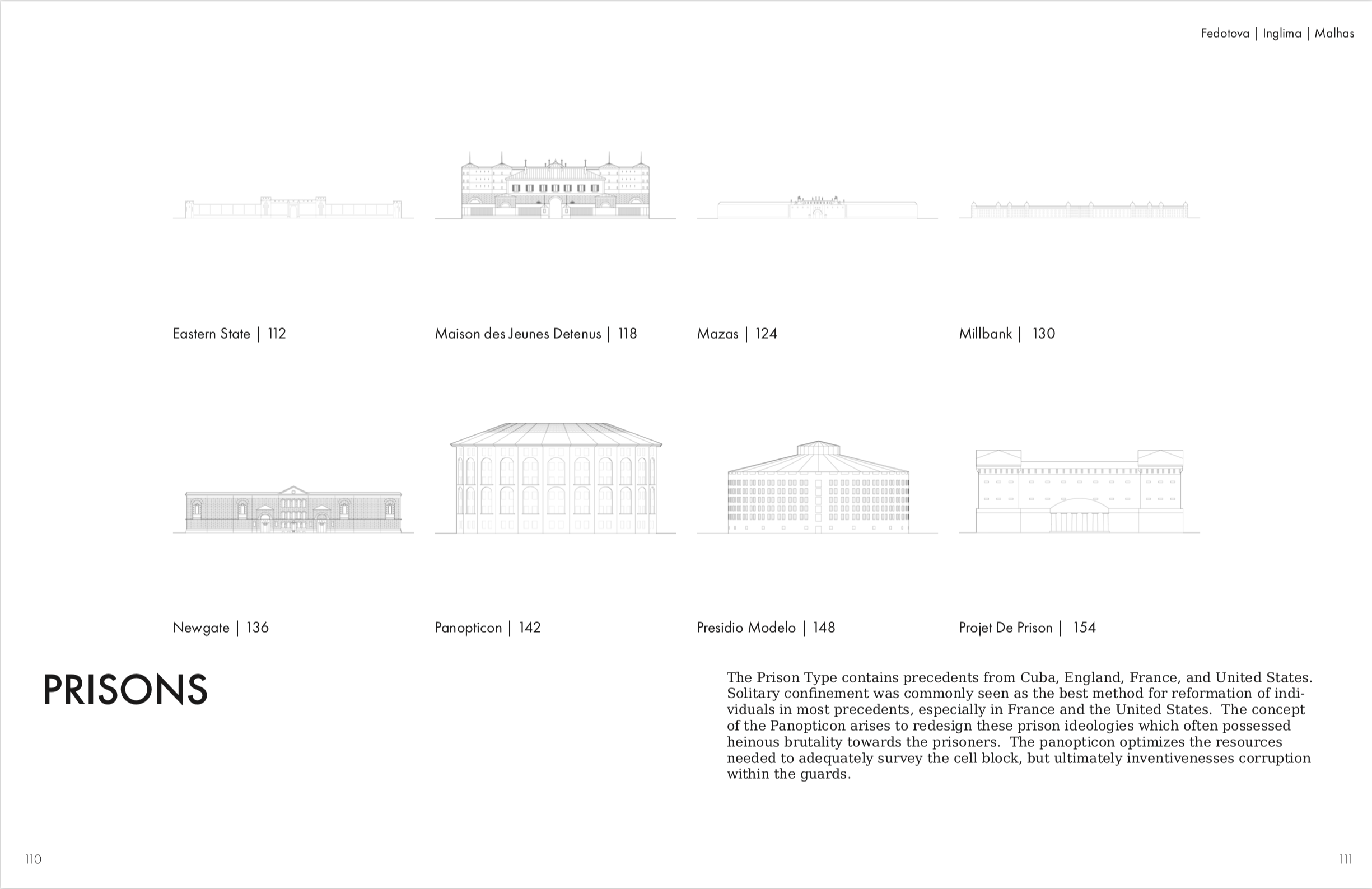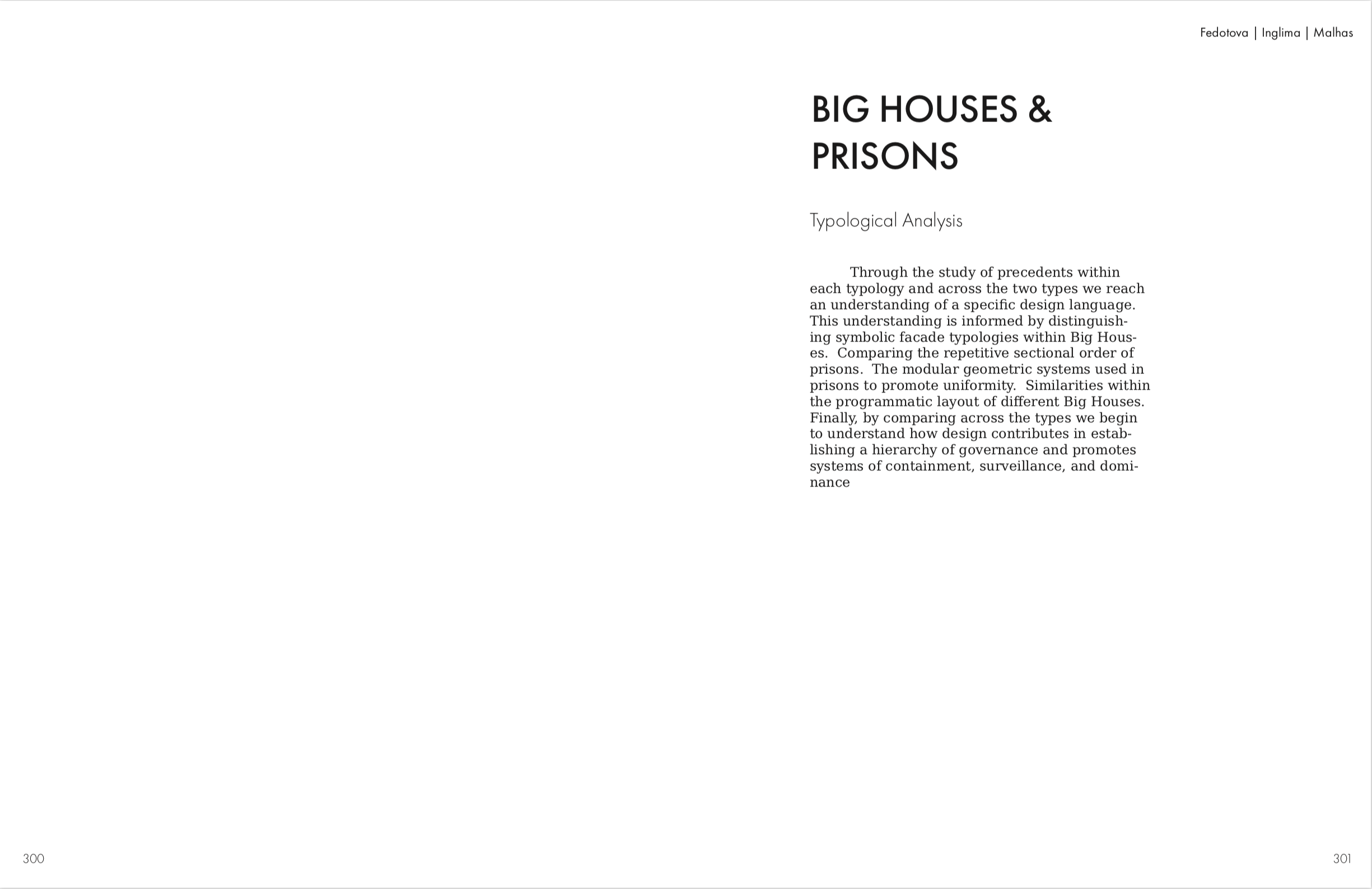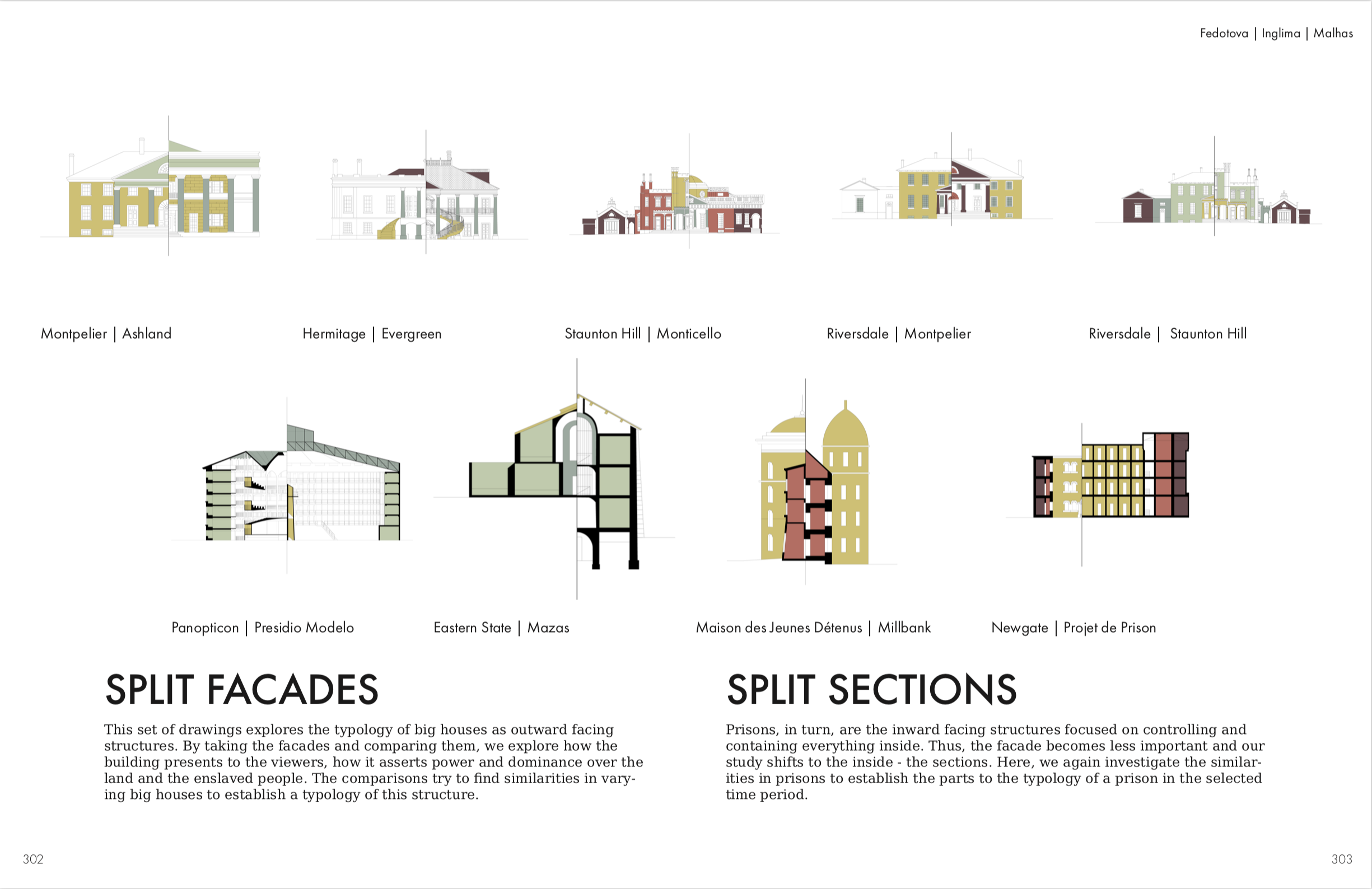A Brief History of Oppressive Type
«As a studio, we examine a selection of architectural types salient to the economic and political situation in which the profession of architecture was emerging as a distinct practice. Further, it is through the drawing of distinctions between types that architectural knowledge was demonstrated by practitioners. This situation calls into question the validity of typological distinction as well as genealogical connections between past and present building forms and spatial arrangements. To begin engaging with and questioning these histories, we perform our own series of typological analyses within the transatlantic space, 1610–1929.»
«Big Houses and Prisons» Introduction:
«The Big House Type, also known as Plantation Homes, were symbols of power and oppressive control over the enslaved populations which were the backbone of the Planation economy. The design of the homes were closely managed by the owners of the plantation, generationally remodeled and expanded to meet their political, societal, and moral standards.
The Prison Type contains precedents from Cuba, England, France, and United States. Solitary confinement was commonly seen as the best method for reformation of individuals in most precedents, especially in France and the United States. The concept of the Panopticon arises to redesign these prison ideologies which often possessed heinous brutality towards the prisoners. The panopticon optimizes the resources needed to adequately survey the cell block, but ultimately inventivenesses corruption within the guards.»
The analysis was performed from gathering and documenting precedents in each type, representing them them through traditional methods such as plan, section and elevation, as well as an analytical drawing of site lines as a means of control and power within these precedents.
Excerpts from the book:
«As a studio, we examine a selection of architectural types salient to the economic and political situation in which the profession of architecture was emerging as a distinct practice. Further, it is through the drawing of distinctions between types that architectural knowledge was demonstrated by practitioners. This situation calls into question the validity of typological distinction as well as genealogical connections between past and present building forms and spatial arrangements. To begin engaging with and questioning these histories, we perform our own series of typological analyses within the transatlantic space, 1610–1929.»
«Big Houses and Prisons» Introduction:
«The Big House Type, also known as Plantation Homes, were symbols of power and oppressive control over the enslaved populations which were the backbone of the Planation economy. The design of the homes were closely managed by the owners of the plantation, generationally remodeled and expanded to meet their political, societal, and moral standards.
The Prison Type contains precedents from Cuba, England, France, and United States. Solitary confinement was commonly seen as the best method for reformation of individuals in most precedents, especially in France and the United States. The concept of the Panopticon arises to redesign these prison ideologies which often possessed heinous brutality towards the prisoners. The panopticon optimizes the resources needed to adequately survey the cell block, but ultimately inventivenesses corruption within the guards.»
The analysis was performed from gathering and documenting precedents in each type, representing them them through traditional methods such as plan, section and elevation, as well as an analytical drawing of site lines as a means of control and power within these precedents.
Excerpts from the book:
Analytical Book
RISD, «Am I Your Type» Studio
Spring 2022
In collaboration with «Am I Your Type Studio»; «Big Houses and Prisons» chapter in collaboration with Tamara Malhas and Joseph Inglima.
RISD, «Am I Your Type» Studio
Spring 2022
In collaboration with «Am I Your Type Studio»; «Big Houses and Prisons» chapter in collaboration with Tamara Malhas and Joseph Inglima.










Comparative Typological Analysis:







